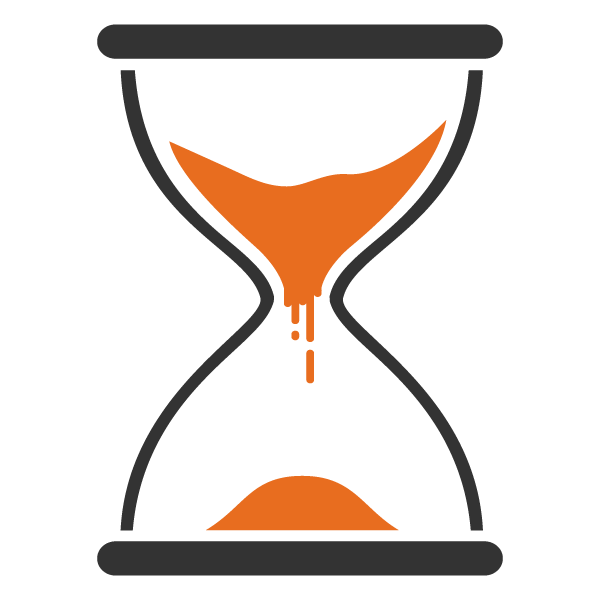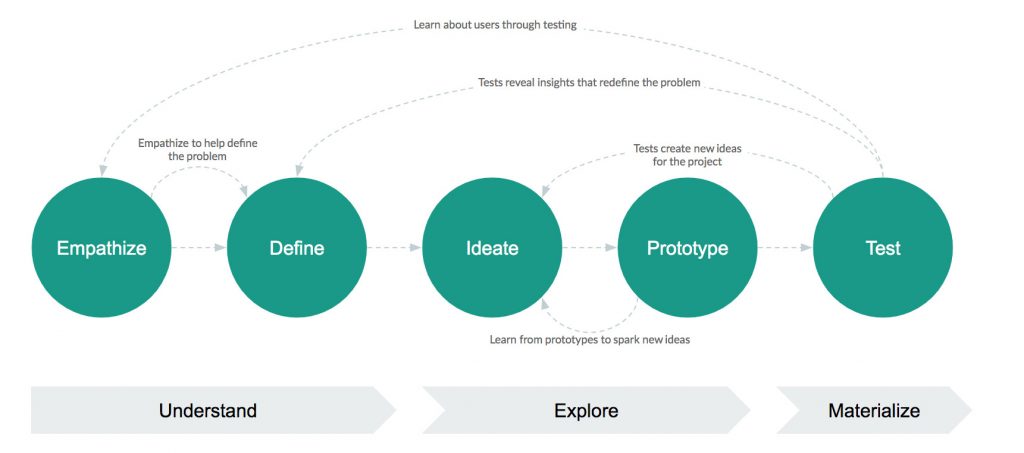Using Design Thinking for More Productive Brainstorming

It’s a Thursday afternoon. A customer has presented your team with a unique problem that requires a more innovative solution. Rather than hope you have a stroke of brilliance on your own, you rally up your team and decide to hold a brainstorming session. Multiple brains are better than one, right?
Fast forward. You’ve been in a room for over an hour with 13 other people. You’re hungry. You’re tired. Your bladder is starting to scream at you. And yet, there are still no solid ideas, let alone good ideas, to work off of.
What happened?
It’s difficult to get brainstorming right.
When done properly, brainstorming is an exciting way to generate ideas and foster innovation and collaboration. When done poorly, it sets the stage for intimidation, decreased productivity, and stress.
If you fail to plan, you plan to fail
If you are going to call a brainstorming meeting you need to plan three things: a goal, a time limit, and an action plan.

A goal gives your team something to strive for.
If possible, give your team some heads-up on the goal before you gather into your closest conference room. They can use this time to think of ideas on their own, and there will be less of a chance you will start the meeting staring at one another in silence.

A time limit adds structure to your session.
Dedicate time in the beginning to define the problem you’re solving, and leave enough time at the end to summarize and create an action plan.

An action plan provides next steps for your team.
Weed through the ideas you’ve come up with, select a few of the top ideas, delegate action items for them, and set a deadline for a follow-up. There’s nothing worse than sitting in the same meeting two or three times in a row, to discuss the same topic, because no action plan was set up after the first one.
Embrace Vulnerability
![]() We all have that voice in the back of our heads that chimes in at inopportune times. The one that tells us “that idea is stupid” or “you’re not smart or informed enough to give an opinion on that.” Brené Brown calls that voice a “shame gremlin,” and it feeds into the uncertainty and fear that comes with being vulnerable.
We all have that voice in the back of our heads that chimes in at inopportune times. The one that tells us “that idea is stupid” or “you’re not smart or informed enough to give an opinion on that.” Brené Brown calls that voice a “shame gremlin,” and it feeds into the uncertainty and fear that comes with being vulnerable.
Embracing vulnerability is hard. But it is only when we lean into the discomfort of vulnerability that true innovation is born.
“I would challenge anyone to point to any act of innovation that was not born of vulnerability, that was not born of putting an idea on a table that half the people in the room thought was stupid. That the other half questioned. If the idea makes sense to everyone right away, there’s nothing innovative about it.”
Researcher Brené Brown
Suspend Judgement: Avoid the “Whack-a-Mole Experience”
Nothing can kibosh brainstorming faster than immediately crushing someone’s idea the moment it is introduced. This is intimidating and reduces the likelihood that others will want to participate. Give people the chance to be heard. By suspending judgment participants will feel more comfortable to generate creative ideas. It’s important to learn to challenge ideas instead of dismissing them outright.
“If you think you’re the smartest person in the room, you’ve just proved that you’re not.”
Daniel Pink
So, What is Design Thinking?
Design Thinking is a process for creative problem-solving. It uses creative activities to foster collaboration and solve problems in human-centered ways.
“Thinking like a designer can transform the way organizations develop products, services, processes, and strategy.”
Tim Brown, IDEO
There are 5 stages of Design Thinking:
- Empathize: Conduct research in order to develop knowledge about what your users do, say, think, and feel.
- Define: Analyze the information about your users to define the core problem in a human-centered manner.
- Ideate: Generate ideas and look for alternative ways to view the problem.
- Prototype: Build tactile representations of your idea to understand which features work and which do not.
- Test: Go back to your users with your prototype and get feedback.
Design Thinking is not as linear as it sounds. Each stage can take you back and forth as you learn about your users and test prototypes. It does, however, follow one basic flow – you need to understand in order to explore, and you need to explore before you can materialize.

How Design Thinking Produces Better Brainstorming
Design Thinking gets you to start thinking differently about stuff.
“Sameness breeds more sameness. Seeing the world with old eyes only helps produce old ideas.”
Arthur VanGundy, PhD
In the Ideation stage of Design Thinking, the objective is to generate as many ideas as possible. As these ideas take shape, they begin to inspire new and even better ideas. The goal: to look beyond the usual ways to solve a problem.
Exercises for Better Brainstorming:
There are many Ideation methods to help you and your team boost creativity and start thinking outside the box. These are a few of my favorites:
- Worst Possible Idea
In this technique, the goal is to come up with the worst ideas imaginable to “solve” the problem. It is a great ice breaker and helps relieve some of that vulnerability anxiety I mentioned above. These “bad ideas” will begin to highlight some powerful insights and can start sparking some really great and innovative ideas.
A great example of this is Jon Bell’s McDonald’s Theory. When co-workers can not come up with ideas for places to eat, Jon recommends McDonald’s. Immediately, everyone starts coming up with better ideas! “People are inspired to come up with good ideas to ward off bad ones.” - The Mash-Up
The Mash-up is a great exercise where you bring odd and unexpected things together to spark new and creative ideas. It’s simple. Create two lists of items/objects/activities, mash an item from each column together, come up with a solution for it, and explain its value.
This method really fosters creative thinking and gets people to step out of their comfort zone. - Fishbowl
When brainstorming in a “fishbowl,” divide your team into two circles – one smaller one (Team A), and a larger one surrounding the smaller one (Team B). Team A will begin brainstorming ideas, while Team B remains quiet. Their job is to listen and document the ideas they are hearing.
After 15 to 20 minutes, have the two teams switch places. Now Team B is in the center talking and building on the ideas they just heard, while Team A is on the outside listening and taking notes.
This exercise teaches how to apply Active Listening while brainstorming in groups. It helps avoid that “whack-a-mole” experience I mentioned earlier and fosters an environment where everyone feels like they are being heard and encouraged.
Brainstorming is an essential step in getting innovative solutions into the hands of your users. But let’s face it, sometimes THE STRUGGLE IS REAL.
Using Design Thinking, you can begin to inspire creativity and collaboration on your team and start solving problems in human-centered ways.
Remember: Great ideas grow from good ideas that spawn from all ideas.
Are you an Awesome Admin looking for more Productivity Tips?
Read: Top 5 Ways To Boost Productivity in Salesforce Service Cloud
- Using Design Thinking for More Productive Brainstorming - August 21, 2019
- 3 Things to Ask Before Implementing Salesforce Community Cloud - April 5, 2018
- 4 Ways Simple Survey Increases Response Rates - March 23, 2017


